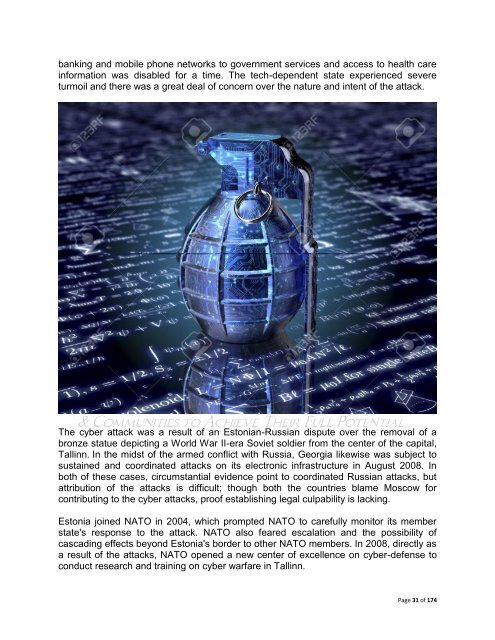International Cyber Terrorism
International Cyber Terrorism
International Cyber Terrorism
- No tags were found...
You also want an ePaper? Increase the reach of your titles
YUMPU automatically turns print PDFs into web optimized ePapers that Google loves.
anking and mobile phone networks to government services and access to health care<br />
information was disabled for a time. The tech-dependent state experienced severe<br />
turmoil and there was a great deal of concern over the nature and intent of the attack.<br />
The cyber attack was a result of an Estonian-Russian dispute over the removal of a<br />
bronze statue depicting a World War II-era Soviet soldier from the center of the capital,<br />
Tallinn. In the midst of the armed conflict with Russia, Georgia likewise was subject to<br />
sustained and coordinated attacks on its electronic infrastructure in August 2008. In<br />
both of these cases, circumstantial evidence point to coordinated Russian attacks, but<br />
attribution of the attacks is difficult; though both the countries blame Moscow for<br />
contributing to the cyber attacks, proof establishing legal culpability is lacking.<br />
Estonia joined NATO in 2004, which prompted NATO to carefully monitor its member<br />
state's response to the attack. NATO also feared escalation and the possibility of<br />
cascading effects beyond Estonia's border to other NATO members. In 2008, directly as<br />
a result of the attacks, NATO opened a new center of excellence on cyber-defense to<br />
conduct research and training on cyber warfare in Tallinn.<br />
Page 31 of 174
















